Heart of the country: Andrew Moore explores America’s Dirt Meridian
Andrew Moore's Dirt Meridian is an aerial survey of the American landscape along the 100th parallel, the line of longitude that takes in North Dakota, South Dakota, Nebraska, Kansas, Oklahoma and Texas. For the most part, this is spectacular open landscape, often dismissed by coast dwellers as 'Flyover Country', the great sweeps of flat farmland and prairie that no-one deems important enough to visit, let alone drive through.
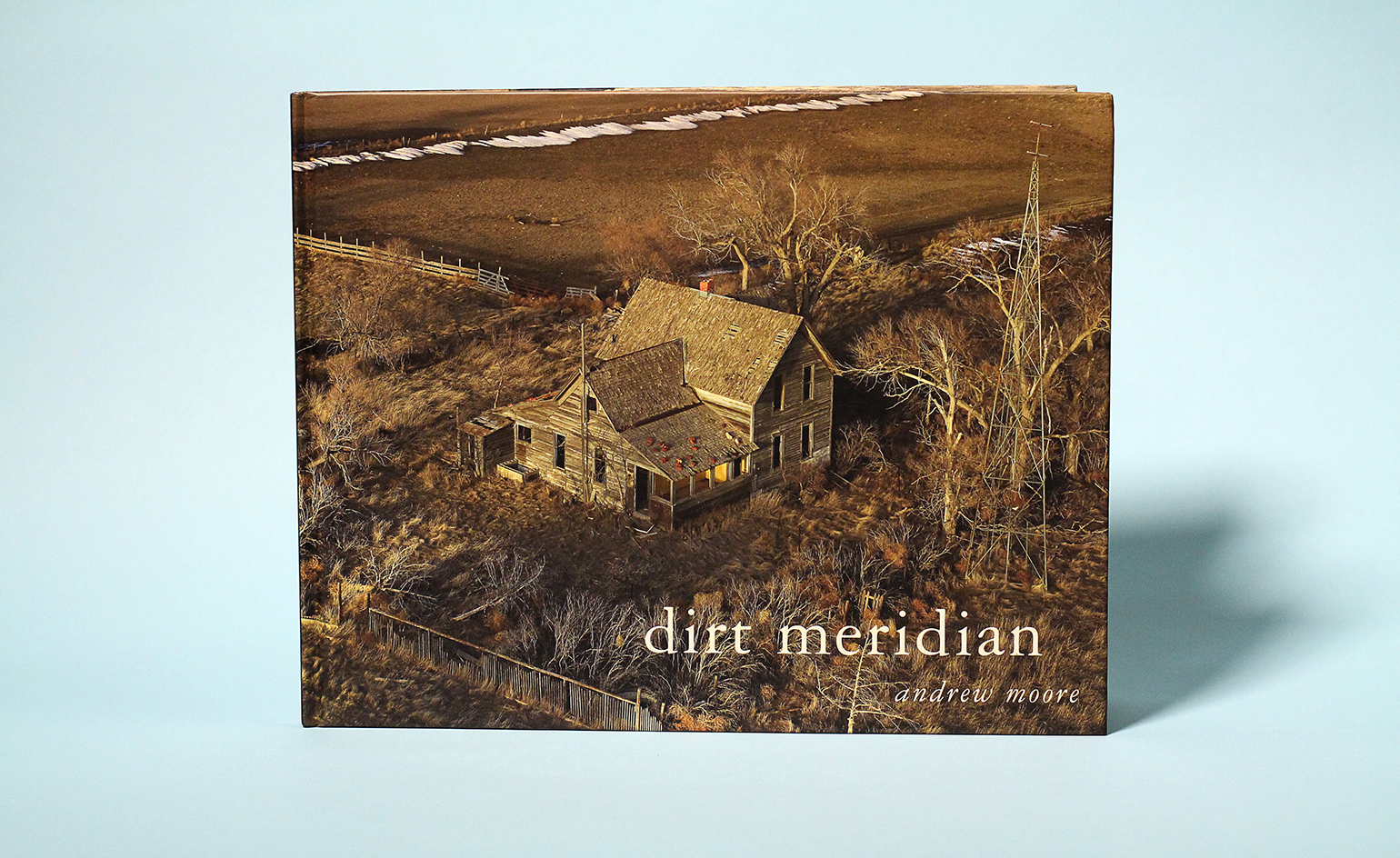
Andrew Moore's Dirt Meridian is an aerial survey of the American landscape along the 100th parallel, the line of longitude that takes in North Dakota, South Dakota, Nebraska, Kansas, Oklahoma and Texas. For the most part, this is spectacular open landscape, often dismissed by coast dwellers as 'Flyover Country' – the great sweeps of flat farmland and prairie that no-one deems important enough to visit, let alone drive through.
Moore's journey runs the length of this north-south line, and was chronicled with a combination of traditional large-format landscape photography and a specially developed aerial survey, using a wing-mounted digital camera to gain a unique perspective on the landscape, thanks to the flying skills of Doug Dean. The project has been ten years in the making, during which time Moore has befriended and photographed the lives of many communities living along the line, as well as the drama and majesty of the countryside they inhabit.
At times it is a dusty, bleak working landscape, with the ruins of past lives all too visible. At others, the contours rise dramatically, and farmland is backed up tight against natural splendour. But mostly, this is a prairie and desert landscape, arid and flat, scoured by dust storms with little rainfall or respite. The 100th meridian remains geographically and psychologically significant, a demarcation that splits the US in two. For all the decades of progress that have followed since the railroad first bisected this countryside in the 19th century, the people who live here and who stand before Moore's camera are still very much pioneers, far removed from our everyday experience. These images convey a strong sense of atmosphere, place and personality, a heartland that is strangely detached from the rest of the country on either side of it.
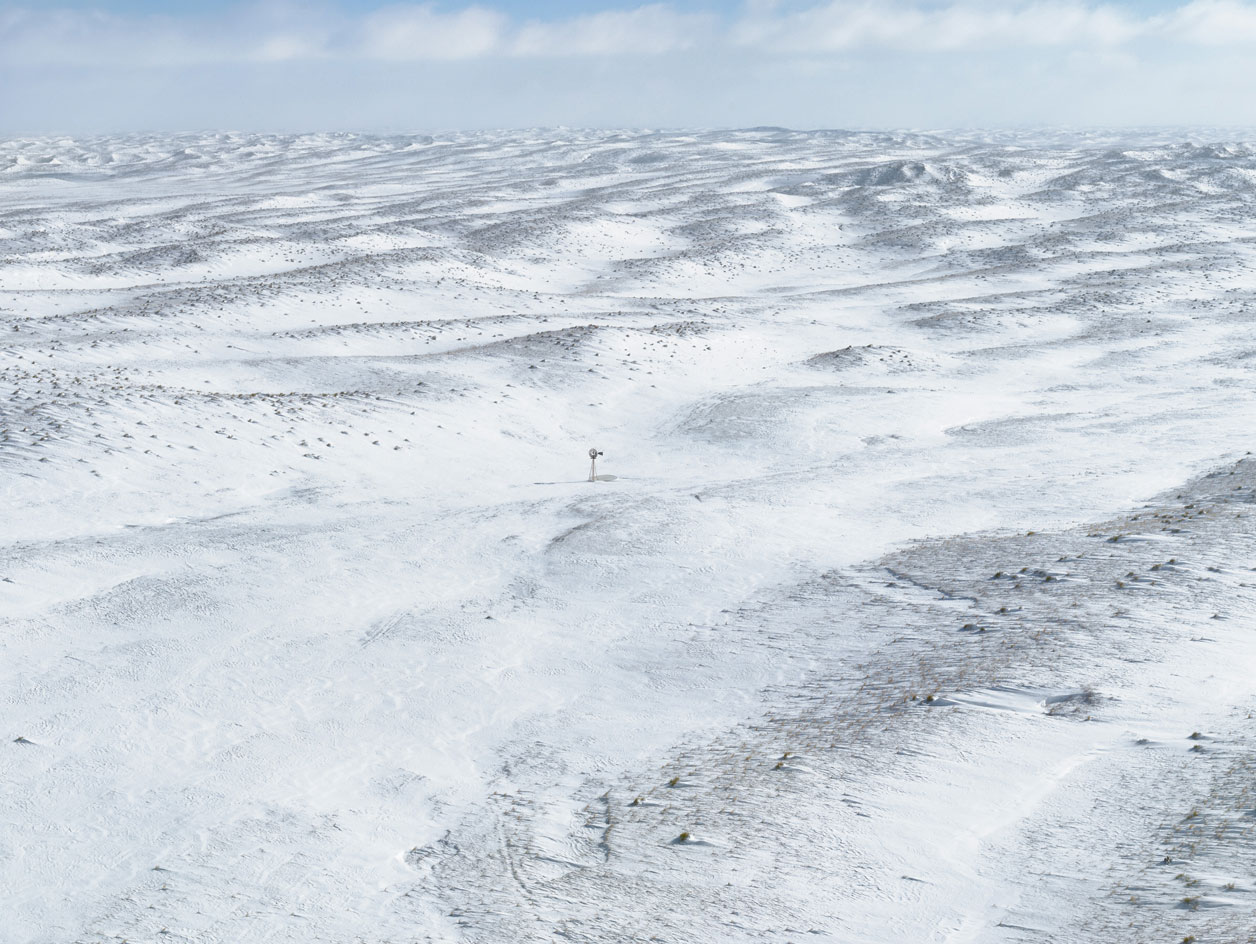
Sandhills Blizzard, Cherry County, Nebraska, 2013

The line of longitude takes in North Dakota, South Dakota, Nebraska, Kansas, Oklahoma and Texas – great sweeps of flat farmland and prairie that no-one deems important enough to visit, let alone drive through. Pictured: Coyote Den, Las Animas County, Colorado, 2014
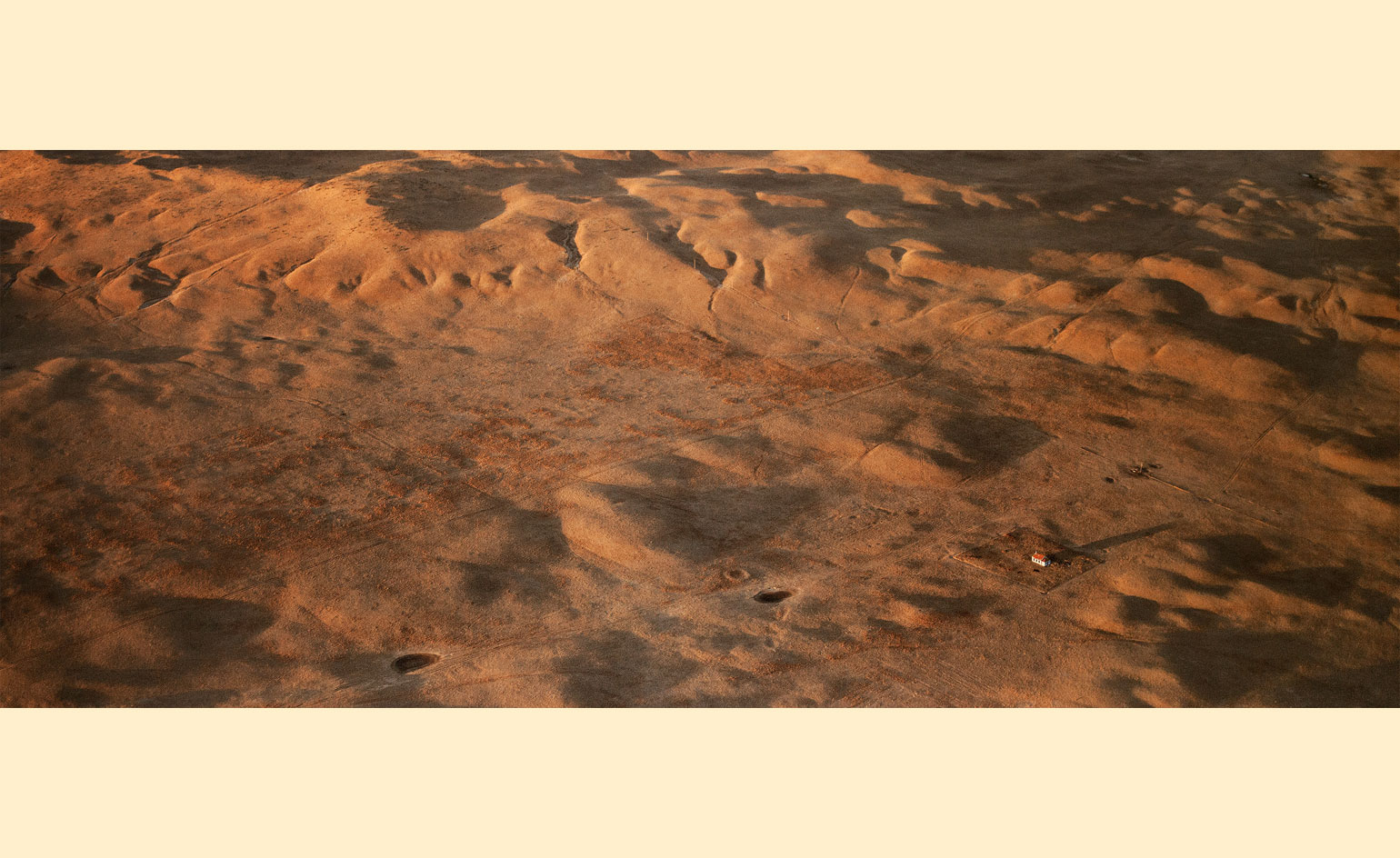
Schoolhouse on the China Pasture, Cherry County, Nebraska, 2013
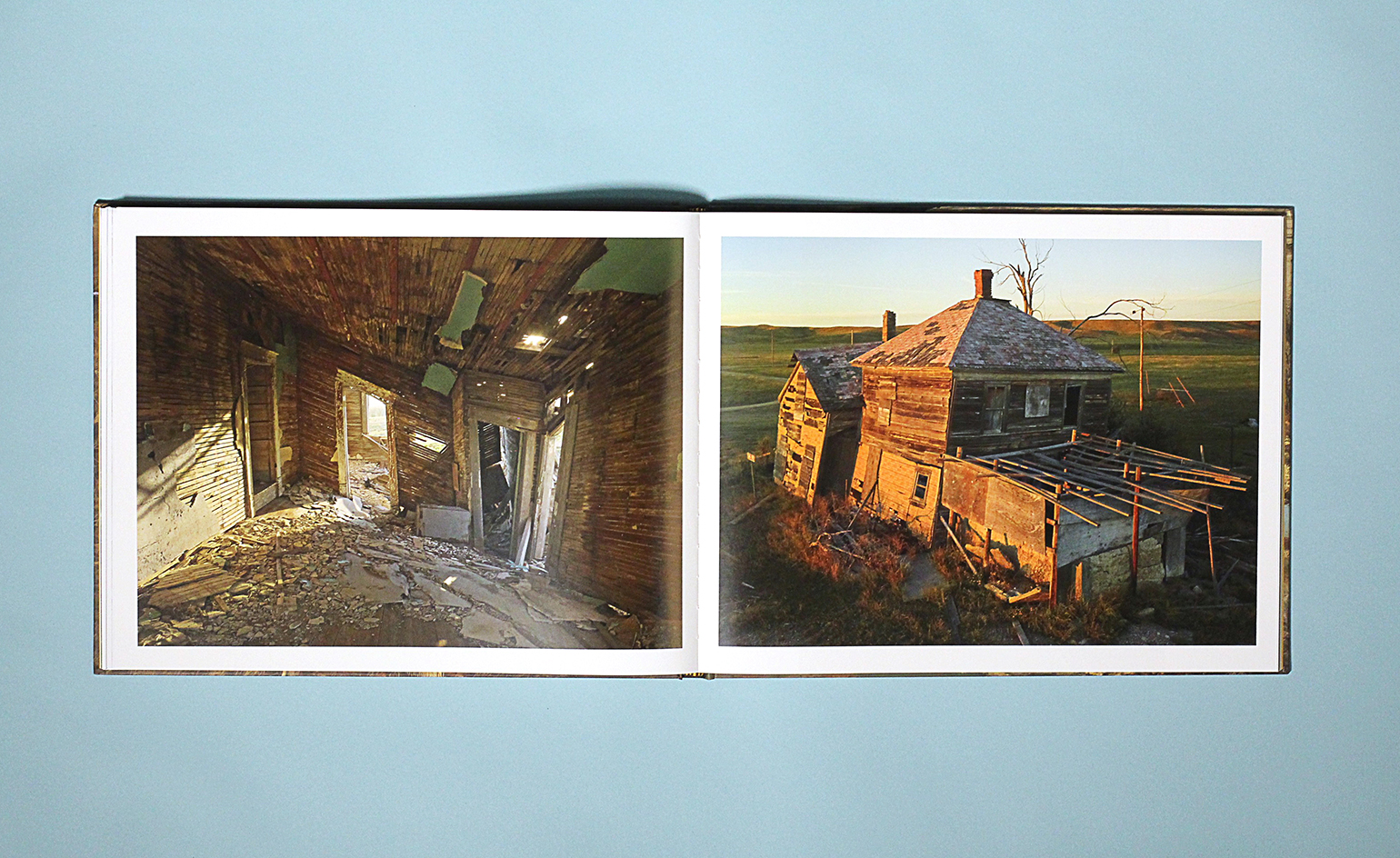
Moore’s journey runs the length of this north-south line, and was chronicled with a combination of traditional large-format landscape photography and a specially developed aerial survey, using a wing-mounted digital camera to gain a unique perspective on the landscape. Pictured left: Thorne House Interior, Jones County, South Dakota, 2014; right: Capa Hotel and Bathhouse, Jones County, South Dakota, 2014
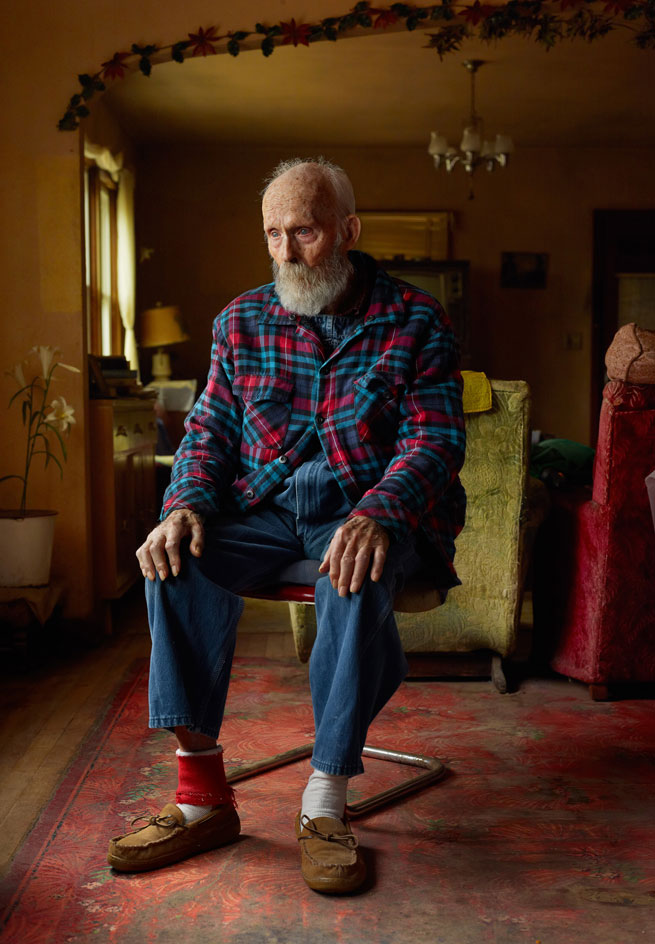
Uncle Teed, Sioux County, Nebraska, 2013
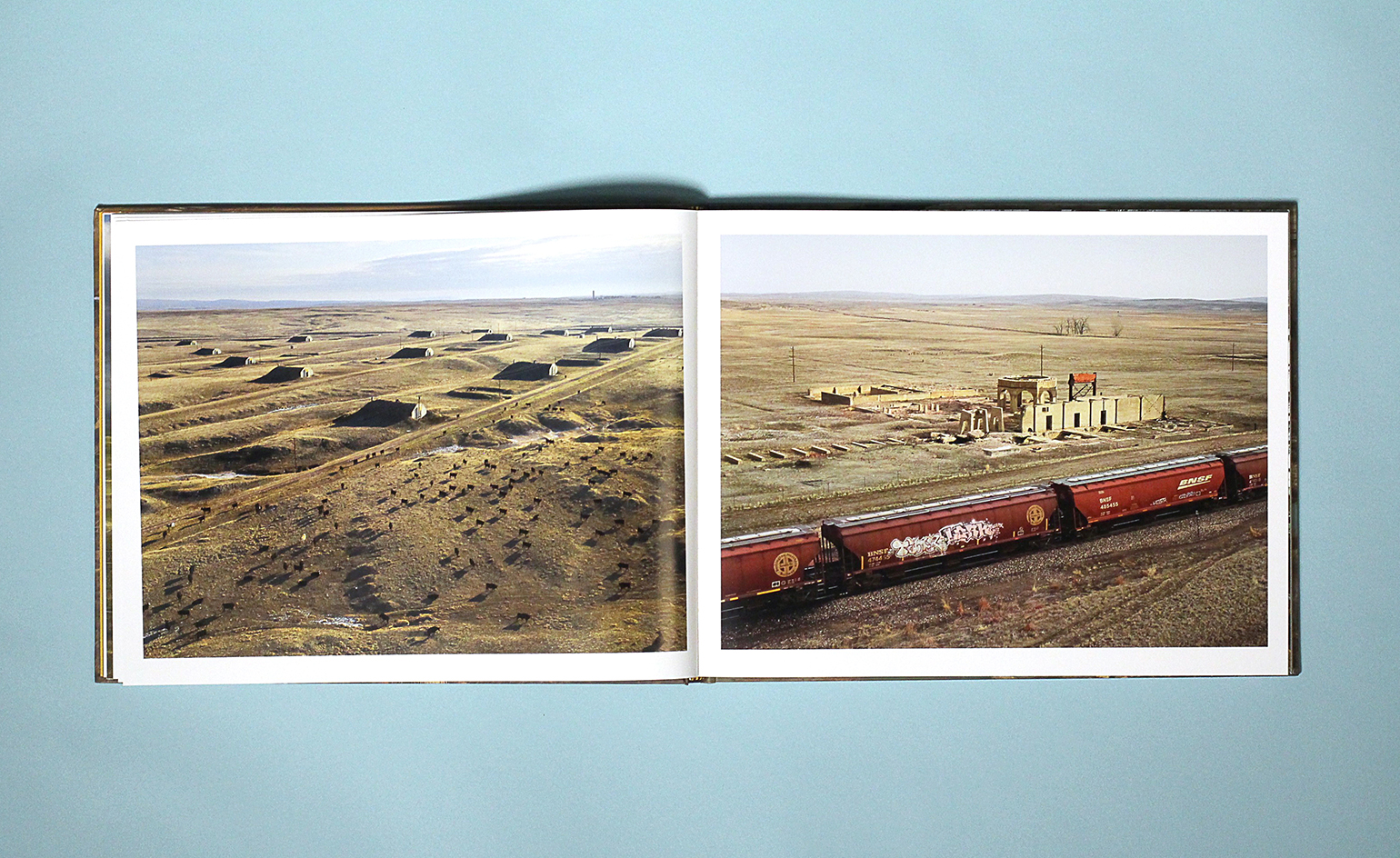
The project has been ten years in the making, during which time Moore has befriended and photographed the lives of many communities living along the line. Pictured left: Grazing by Igloos, Fall River County, South Dakota, 2013; right: Potash Plant Remnants, Sheridan County, Nebraska, 2013
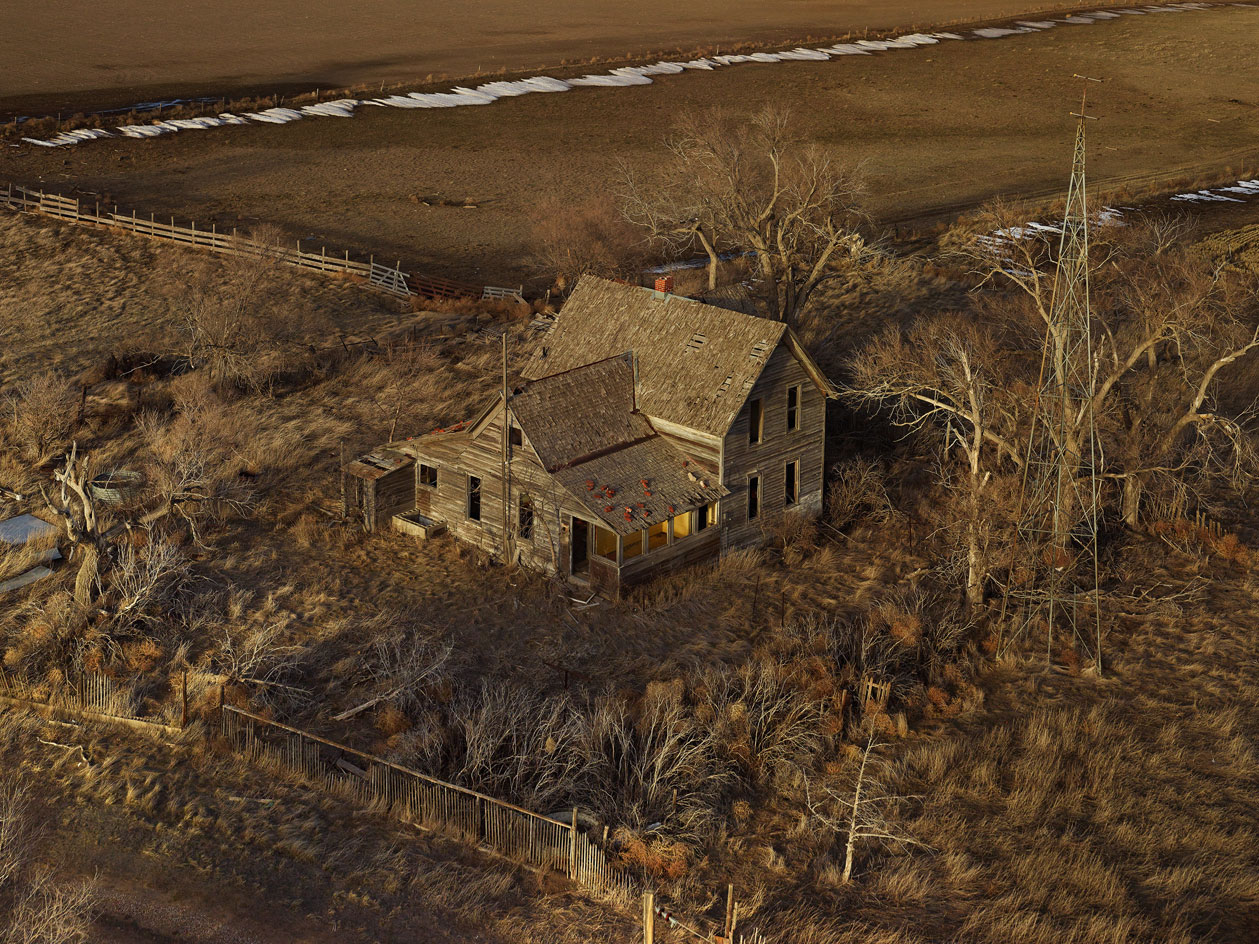
The Yellow Porch, Sheridan County, Nebraska, 2013
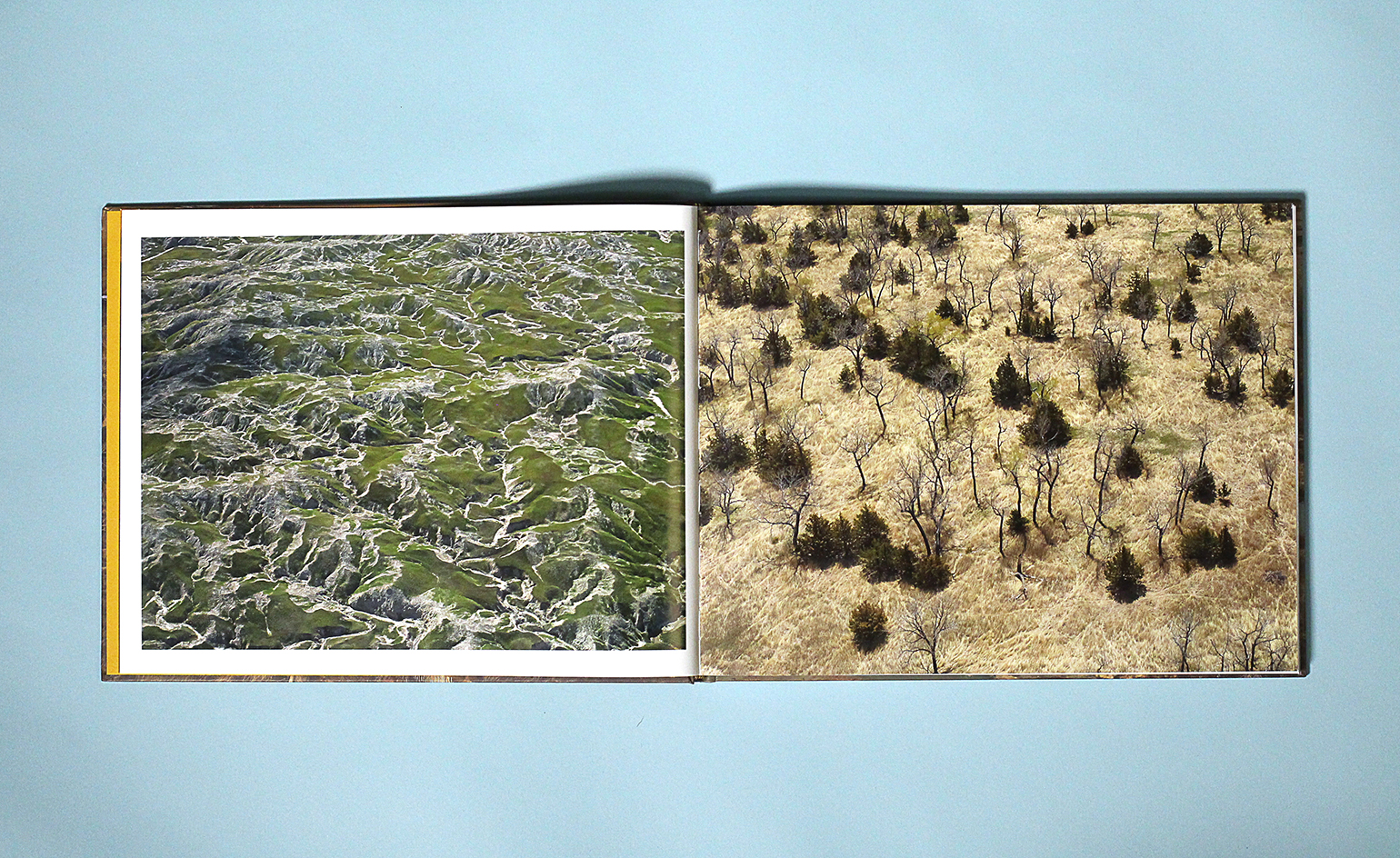
At times it is a dusty, bleak working landscape, with the ruins of past lives all too visible. At others, the contours rise dramatically, and farmland is backed up tight against natural splendour. Pictured left: Chalk Hills, Custer County, South Dakota, 2014; right: Along the Bad River, Haakon County, South Dakota, 2014
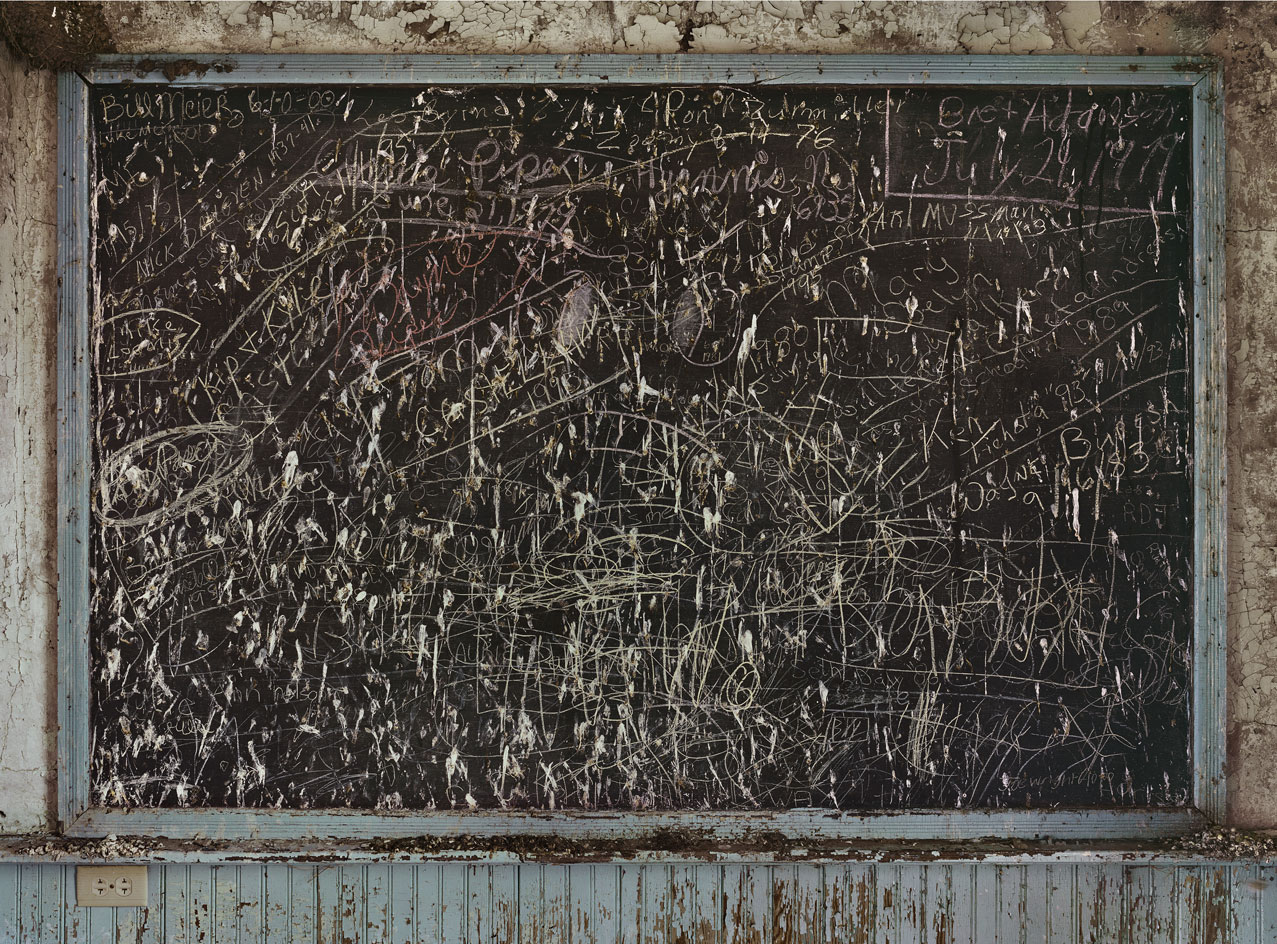
School District 123, Cherry County, Nebraska, 2012
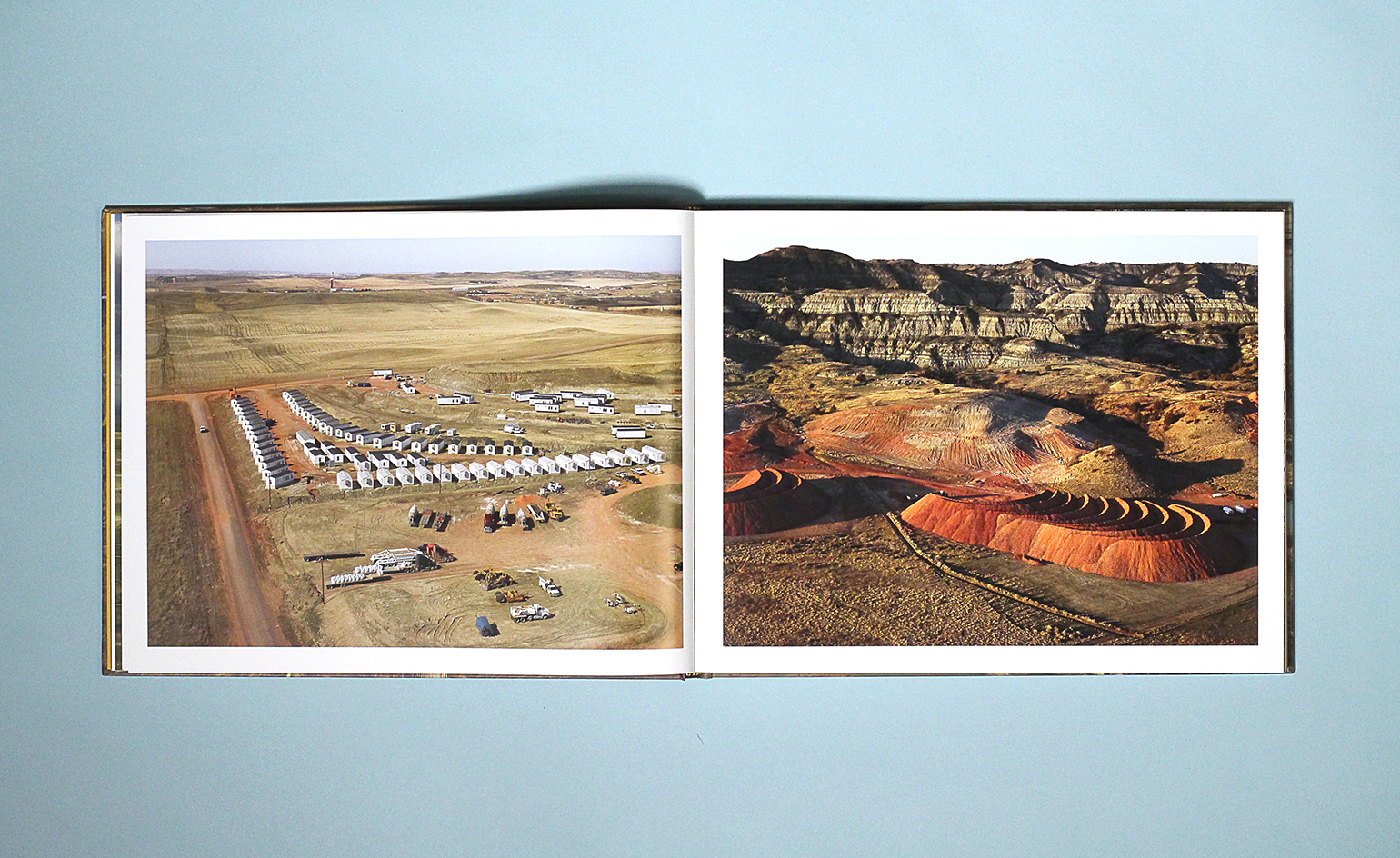
These images convey a strong sense of atmosphere, place and personality, a heartland that is strangely detached from the rest of the country on either side of it. Pictured left: Roughneck Housing, McKenzie County, North Dakota, 2013; right: Red Road Rock, Dunn County, North Dakota, 2013
INFORMATION
Dirt Meridian by Andrew Moore, $50, published by Damiani
Wallpaper* Newsletter
Receive our daily digest of inspiration, escapism and design stories from around the world direct to your inbox.
Jonathan Bell has written for Wallpaper* magazine since 1999, covering everything from architecture and transport design to books, tech and graphic design. He is now the magazine’s Transport and Technology Editor. Jonathan has written and edited 15 books, including Concept Car Design, 21st Century House, and The New Modern House. He is also the host of Wallpaper’s first podcast.
-
 The Lighthouse draws on Bauhaus principles to create a new-era workspace campus
The Lighthouse draws on Bauhaus principles to create a new-era workspace campusThe Lighthouse, a Los Angeles office space by Warkentin Associates, brings together Bauhaus, brutalism and contemporary workspace design trends
By Ellie Stathaki
-
 Extreme Cashmere reimagines retail with its new Amsterdam store: ‘You want to take your shoes off and stay’
Extreme Cashmere reimagines retail with its new Amsterdam store: ‘You want to take your shoes off and stay’Wallpaper* takes a tour of Extreme Cashmere’s new Amsterdam store, a space which reflects the label’s famed hospitality and unconventional approach to knitwear
By Jack Moss
-
 Titanium watches are strong, light and enduring: here are some of the best
Titanium watches are strong, light and enduring: here are some of the bestBrands including Bremont, Christopher Ward and Grand Seiko are exploring the possibilities of titanium watches
By Chris Hall
-
 Leonard Baby's paintings reflect on his fundamentalist upbringing, a decade after he left the church
Leonard Baby's paintings reflect on his fundamentalist upbringing, a decade after he left the churchThe American artist considers depression and the suppressed queerness of his childhood in a series of intensely personal paintings, on show at Half Gallery, New York
By Orla Brennan
-
 Desert X 2025 review: a new American dream grows in the Coachella Valley
Desert X 2025 review: a new American dream grows in the Coachella ValleyWill Jennings reports from the epic California art festival. Here are the highlights
By Will Jennings
-
 In ‘The Last Showgirl’, nostalgia is a drug like any other
In ‘The Last Showgirl’, nostalgia is a drug like any otherGia Coppola takes us to Las Vegas after the party has ended in new film starring Pamela Anderson, The Last Showgirl
By Billie Walker
-
 ‘American Photography’: centuries-spanning show reveals timely truths
‘American Photography’: centuries-spanning show reveals timely truthsAt the Rijksmuseum in Amsterdam, Europe’s first major survey of American photography reveals the contradictions and complexities that have long defined this world superpower
By Daisy Woodward
-
 Sundance Film Festival 2025: The films we can't wait to watch
Sundance Film Festival 2025: The films we can't wait to watchSundance Film Festival, which runs 23 January - 2 February, has long been considered a hub of cinematic innovation. These are the ones to watch from this year’s premieres
By Stefania Sarrubba
-
 What is RedNote? Inside the social media app drawing American users ahead of the US TikTok ban
What is RedNote? Inside the social media app drawing American users ahead of the US TikTok banDownloads of the Chinese-owned platform have spiked as US users look for an alternative to TikTok, which faces a ban on national security grounds. What is Rednote, and what are the implications of its ascent?
By Anna Solomon
-
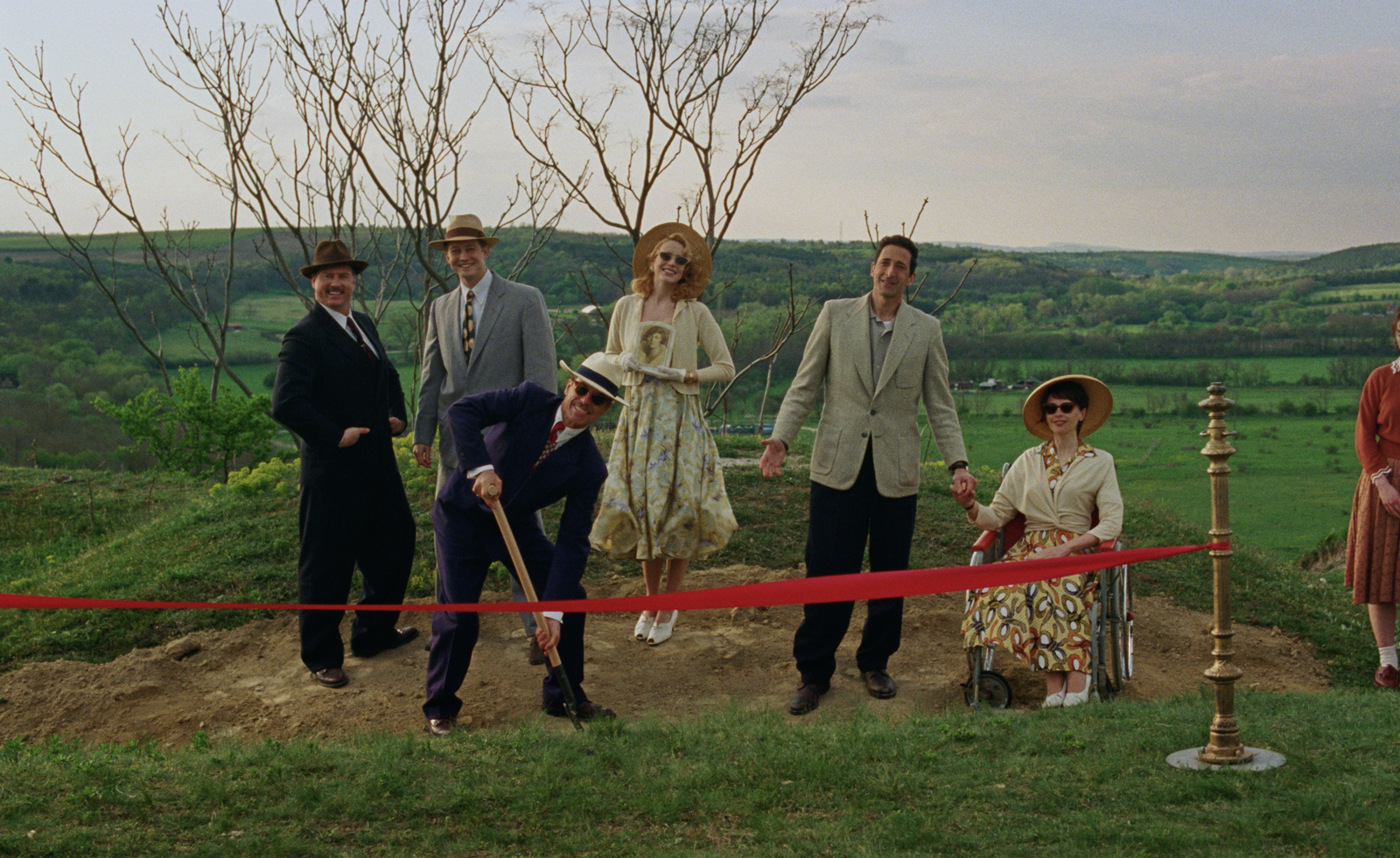 Architecture and the new world: The Brutalist reframes the American dream
Architecture and the new world: The Brutalist reframes the American dreamBrady Corbet’s third feature film, The Brutalist, demonstrates how violence is a building block for ideology
By Billie Walker
-
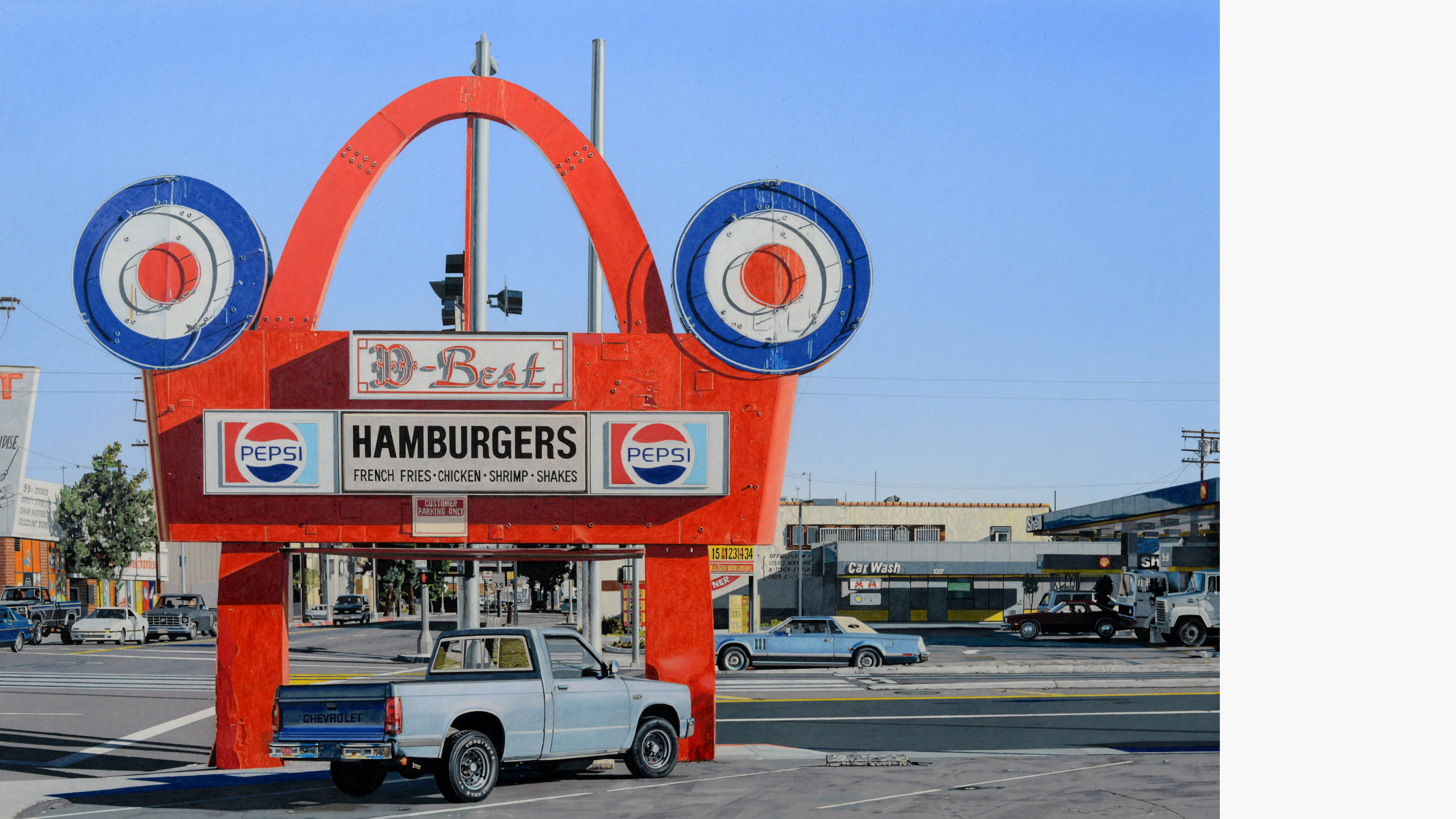 ‘Gas Tank City’, a new monograph by Andrew Holmes, is a photorealist eye on the American West
‘Gas Tank City’, a new monograph by Andrew Holmes, is a photorealist eye on the American West‘Gas Tank City’ chronicles the artist’s journey across truck-stop America, creating meticulous drawings of fleeting moments
By Jonathan Bell